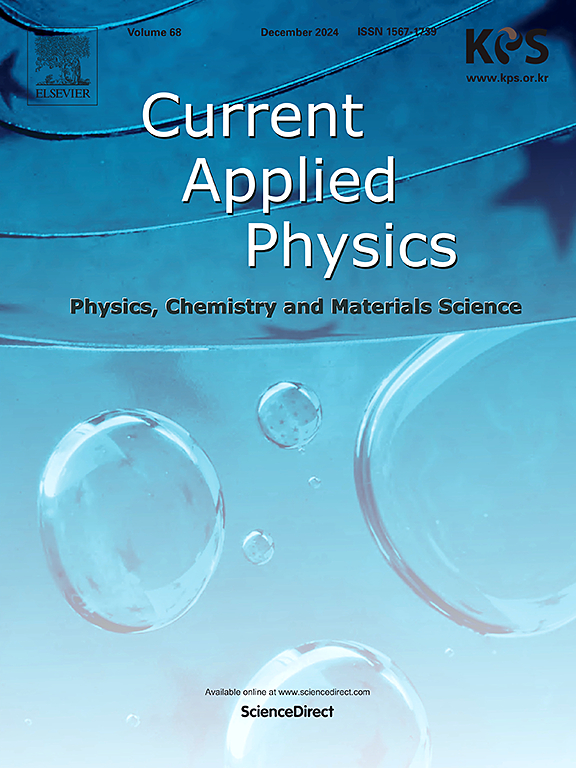Electronic properties of bilayer graphene/Janus MoSTe heterostructure
IF 3.1
4区 物理与天体物理
Q3 MATERIALS SCIENCE, MULTIDISCIPLINARY
引用次数: 0
Abstract
A notable feature of 2D materials is their ability to form van der Waals heterostructures, enabling tailored electronic properties. Among these, Janus TMDs, with their asymmetric structure and dipole moment, exhibit unique properties like piezoelectricity, Rashba effect, and catalytic activity. In this study, we have performed density functional theory (DFT) calculations to investigate the electronic properties of a heterostructure composed of bilayer graphene (BLG) and a Janus MoSTe monolayer, focusing on the difference in interfacial contact behaviors between them. Our calculations indicate that the Dirac cone in BLG within the BLG/Janus MoSTe heterostructure opens due to electron transfer at the metal-semiconductor interface and the electric field generated by the asymmetry of Janus MoSTe. Depending on the contact orientation, this interaction results in BLG's bandgaps of 46 meV and 70 meV, respectively, highlighting the tunability and potential applications of BLG/Janus TMD heterostructures in optoelectronic devices.
双层石墨烯/Janus MoSTe异质结构的电子性质
二维材料的一个显著特征是它们能够形成范德华异质结构,从而实现定制的电子特性。其中,Janus tmd具有不对称结构和偶极矩,具有压电性、Rashba效应和催化活性等独特性能。在这项研究中,我们通过密度泛函理论(DFT)计算来研究由双层石墨烯(BLG)和Janus MoSTe单层组成的异质结构的电子性质,重点研究它们之间界面接触行为的差异。我们的计算表明,在BLG/Janus MoSTe异质结构中,由于金属-半导体界面的电子转移和Janus MoSTe的不对称性产生的电场,BLG中的Dirac锥打开。根据接触方向的不同,这种相互作用导致BLG的带隙分别为46 meV和70 meV,突出了BLG/Janus TMD异质结构在光电器件中的可调性和潜在应用。
本文章由计算机程序翻译,如有差异,请以英文原文为准。
求助全文
约1分钟内获得全文
求助全文
来源期刊

Current Applied Physics
物理-材料科学:综合
CiteScore
4.80
自引率
0.00%
发文量
213
审稿时长
33 days
期刊介绍:
Current Applied Physics (Curr. Appl. Phys.) is a monthly published international journal covering all the fields of applied science investigating the physics of the advanced materials for future applications.
Other areas covered: Experimental and theoretical aspects of advanced materials and devices dealing with synthesis or structural chemistry, physical and electronic properties, photonics, engineering applications, and uniquely pertinent measurement or analytical techniques.
Current Applied Physics, published since 2001, covers physics, chemistry and materials science, including bio-materials, with their engineering aspects. It is a truly interdisciplinary journal opening a forum for scientists of all related fields, a unique point of the journal discriminating it from other worldwide and/or Pacific Rim applied physics journals.
Regular research papers, letters and review articles with contents meeting the scope of the journal will be considered for publication after peer review.
The Journal is owned by the Korean Physical Society.
 求助内容:
求助内容: 应助结果提醒方式:
应助结果提醒方式:


